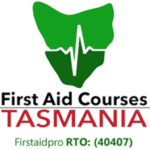The top 10 most dangerous industries in Australia claims about 170 recorded deaths in 2015. Many of these professions have retained their spot on the list for years.
Workplace Injury Rate
The current rate of fatal workplace incidents in Australian workplaces is 1.5 workers per 100,000 inhabitants. In total, 190 workers suffered work-related deaths, and 16 of them were under 25.
Safe Work Australia (SWA) releases a list of the most dangerous industries and professions. The list also highlights the number of deaths that happened over the last decade.
10 Most Dangerous Industries In Australia
- Agriculture
There is no doubt that agriculture, forestry, and fishing is hard work and risky professions. Agri workers must deal with hazards such as chemicals, dust, sun exposure, noise, and dangerous equipment daily. On top of that, Agri work is often remote and in isolation. At present, it is the deadliest industry for Australian workers to be in.
SWA record shows that 37 people died while on the job in 2018. It states that Agri workers suffer 11.2 deaths per 100,000, almost double the rate compared to the past years.
- Construction
The construction industry has held some of the highest numbers of workplace fatalities over the past years. The statistics from the last three years shows employers the importance of Work Health and Safety (WHS) in the workplace.
In 2018, 24 construction workers died on the job, and that figure dropped by a quarter in 2019, resulting in only 18 deaths. However, the fatality rate rose again in 2020, with 27 total deaths before the end of the year.
This data indicates the essence of WHS that many employers can set and tend to forget. Workplace safety requires constant and ongoing attention, regular review of procedures and protocols.
- Transport And Storage
Ranking in the third spot is the transport, postal, and warehousing industry, with 38 workers losing their lives in 2018 (raw figures). The current fatality rate is 5.9 per 100,000 workers. The number indicates how massive the industry is and how dangerous this line of work is.
Transport involves constant fatigue, overspeeding, and drug use. There is also a risk of driver’s lack of attention, specific road conditions, and environmental factors. All of these keep the transport industry at high risk.
- Manufacturing
The manufacturing sector had 13 total deaths in 2018, representing about 1.4 workers per 100,000 inhabitants.
Manufacturing in Australia is a diverse industry with thousands working doing different tasks on a day-to-day basis. It includes food and beverage processing and creating textiles, woods, and other paper products. Chemical manufacturing for pesticides, pharmaceuticals, cosmetics and other machinery and furniture belong to this industry.
Manufacturing businesses can range from small and independent owners who produce limited stock to large-scale production plants. All these boils down to having WHS rules in place to ensure workers safety.
- Mining
The Australian mining industry has put tremendous effort into improving workplace health and safety over the past decade. Back in 2003, the worker fatality rate in mining was 12.4 per 100,000 workers. Fast forward to the present, that figure fell to only 3.7.
Still, the mining industry remains one of the most dangerous workplaces in Australia, with the third-highest fatality rate. The most common cause of injury is poor manual handling. This includes slips, trips, falls, being hit by moving objects, and working with heavy equipment.
Other high-risk industries in Australia include:
- Wholesale trade
- Health care and social assistance
- Public administration and safety
- Electricity, gas, water, and waste services
- Administration and support services
Build A Safety Culture At Work
There are many steps a business owner can take to minimise the number of injuries and illnesses amongst the employees. These include providing Manual handling training, PPE, and keeping workers educated on first aid procedures in an emergency.
Check our list of corporate and group first aid courses for workplace safety needs.








